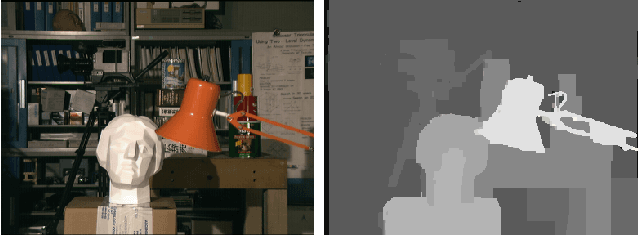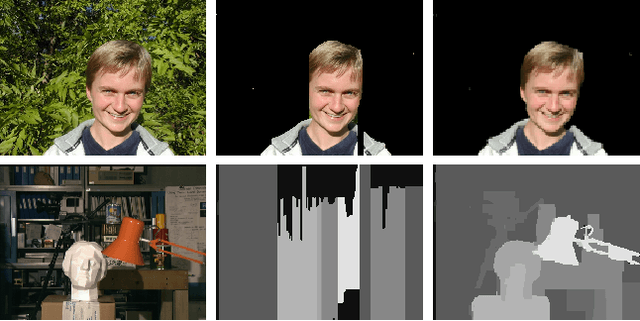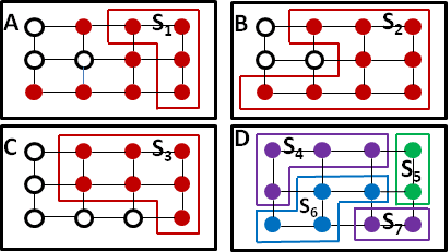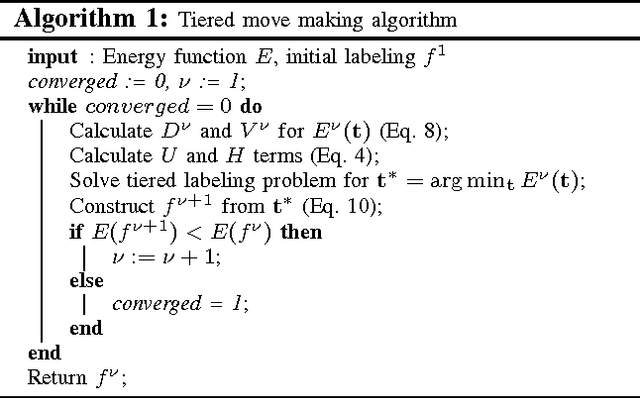A Tiered Move-making Algorithm for General Non-submodular Pairwise Energies
Paper and Code
Mar 25, 2014



A large number of problems in computer vision can be modelled as energy minimization problems in a Markov Random Field (MRF) or Conditional Random Field (CRF) framework. Graph-cuts based $\alpha$-expansion is a standard move-making method to minimize the energy functions with sub-modular pairwise terms. However, certain problems require more complex pairwise terms where the $\alpha$-expansion method is generally not applicable. In this paper, we propose an iterative {\em tiered move making algorithm} which is able to handle general pairwise terms. Each move to the next configuration is based on the current labeling and an optimal tiered move, where each tiered move requires one application of the dynamic programming based tiered labeling method introduced in Felzenszwalb et. al. \cite{tiered_cvpr_felzenszwalbV10}. The algorithm converges to a local minimum for any general pairwise potential, and we give a theoretical analysis of the properties of the algorithm, characterizing the situations in which we can expect good performance. We first evaluate our method on an object-class segmentation problem using the Pascal VOC-11 segmentation dataset where we learn general pairwise terms. Further we evaluate the algorithm on many other benchmark labeling problems such as stereo, image segmentation, image stitching and image denoising. Our method consistently gets better accuracy and energy values than alpha-expansion, loopy belief propagation (LBP), quadratic pseudo-boolean optimization (QPBO), and is competitive with TRWS.
 Add to Chrome
Add to Chrome Add to Firefox
Add to Firefox Add to Edge
Add to Edge